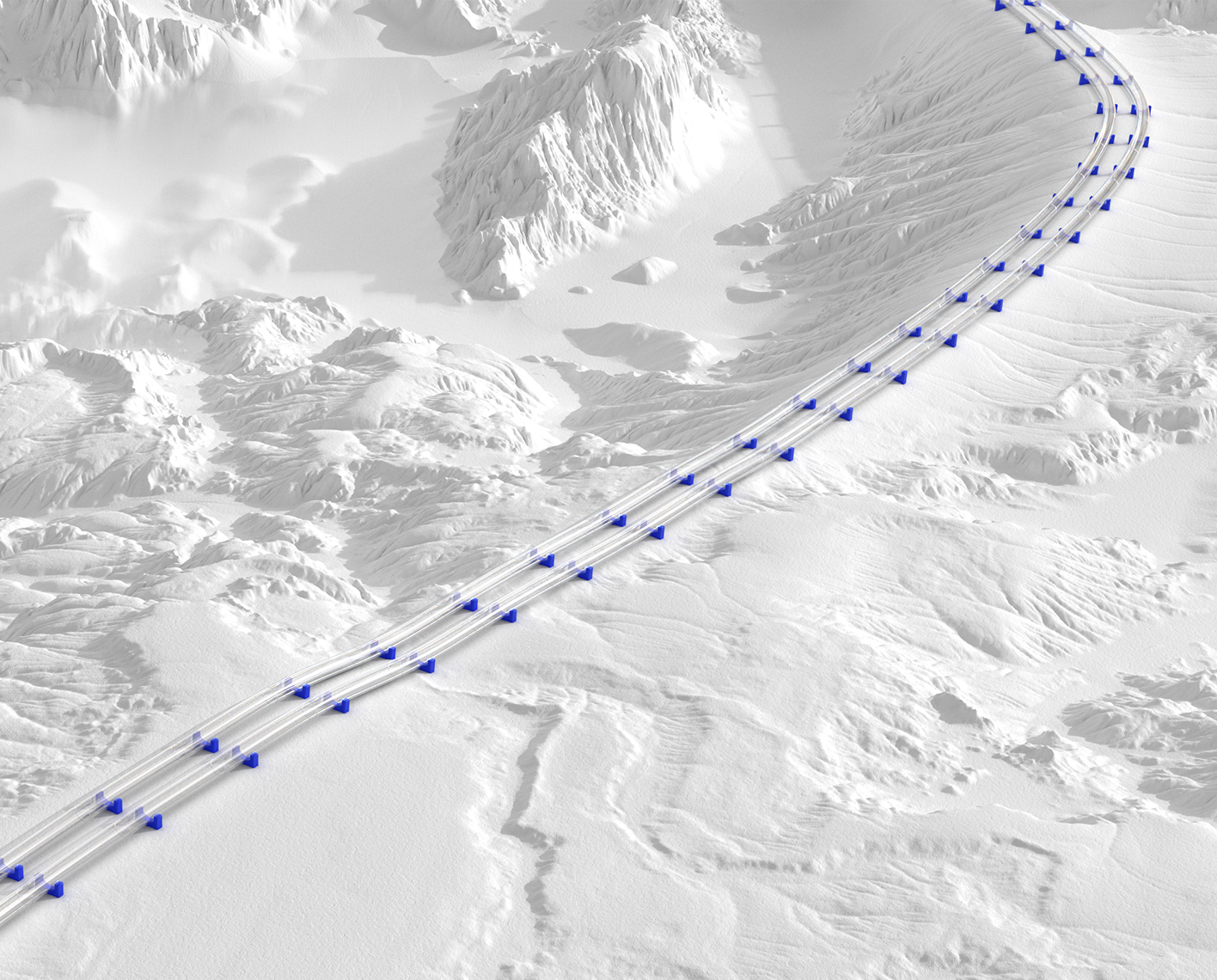Pipesim well performance modeling
Optimize well performance through comprehensive modeling of completions and artificial lift systems

With the interactive graphical schematic and templates of the Pipesim steady-state multiphase flow simulator, well models can be created in a thorough, fast and efficient way to help increase production and understand reservoir potential. The Pipesim simulator models multiphase flow from the reservoir to the wellhead and considers artificial lift systems, including rod pumps, ESP, and gas lift. Well performance modeling capabilities in the simulator enables users to:

- Design optimal well completions and artificial lift systems.
- Diagnose problems that are limiting well production potential.
- Optimize production from existing wells by quantifying actions to increase flow rates.
Nodal analysis
Nodal analysis has long been the established method of evaluating well performance, and it is critical to understanding the behavior of not only the well but entire system. Nodal analysis enables the creation of inflow-outflow plots at any point in the system. Sensitivity analyses can be performed on any system variable, providing an understanding of where production enhancements opportunities exist. In addition to nodal analysis, the Pipesim simulator offers a variety of other well-specific simulation tasks, addressing a wide range of well modeling workflows.
Modeling completions
The Pipesim simulator includes all the standard completion model types for vertical, horizontal, and fractured wells, and allows for complex multilayered completions using a wide variety of reservoir inflow parameters and fluid descriptions. Intelligent completions, such as downhole flow control valves, can be applied to control flow from individual layers to reduce backpressure on other potential contributing layers.
Artificial lift design
The most suitable artificial lift method can be determined and then detailed gas lift, rod pump, or ESP design can be examined. The sophisticated sensitivity tools allow artificial lift parameters (injection gas and ESP stages) to be analyzed so that optimal production can be obtained.
Pipesim steady-state multiphase flow simulator incorporates the three core areas of flow modeling: multiphase flow, heat transfer and fluid behavior. For 40 years, the Pipesim simulator has been continuously improved not only by the latest science in these areas, but also the latest innovations in computing and oil and gas industry technologies.
The Pipesim simulator includes advanced three-phase mechanistic models, rigorous heat transfer modeling and comprehensive PVT modeling options. The ESRI-supported GIS map canvas helps deliver true spatial representation of wells, equipment and networks. Networks can be built either on the GIS canvas or automatically using a GIS shapefile. Rapid well model building and analysis are done with an interactive graphical wellbore. The implementation of a new parallel network solver, which spreads the computational load across all processors results in a faster simulation runtime.
Pipesim well performance capabilities
- Well design and completion modeling.
- Select the optimal tubing and casing size.
- Design water or gas injection wells.
- Determine the optimal horizontal completion length.
- Model multilayer and multilateral wells.
- Perform a completion design with detailed quantification of production improvements by reducing skin effects.
- Match completion parameters and pressure-temperature profiles, using automated regression.
- Perform detailed sensitivity analysis to identify parameters impacting production.
Flow modeling
- Model tubular, annular, or mixed flow.
- Generate pressure temperature profiles.
- Flow correlation comparison.
- Data matching.
- Identify wellbore flow assurance issues such as erosion, corrosion, and solids formation (scale, wax, hydrates, and asphaltenes).
- Generate vertical flow performance (VFP) tables for reservoir simulators.
- Diagnose liquid loading in gas wells and evaluate measures to alleviate the problem.
- Model the effects of crossflow between zones.
Well equipment and systems modeling
- Model downhole equipment such as chokes, subsurface safety valves, separators, and chemical injectors.
- Design artificial lift systems including gas lift, ESPs, PCPs, and rod pumps, comparing the relative benefits of each system.
- Model the effects of coiled tubing gas injection or velocity strings.
- Optimize production of intelligent completions through modeling downhole flow control valves.

Pipesim well performance modeling training courses address the unique need of each learner, our courses, delivered by world-class experts, teach learners how to deal with real-life scenarios and solve genuine problems.
In this section
-

Pipesim extensibility and integration
Pipesim access and versatility
-

Pipesim flow assurance modeling
Ensures fluid flow to maintain production—from pore to process
-

Pipesim flow modeling
The foundation for steady-state multiphase flow analysis
-

Pipesim network simulation / optimization
Advanced network simulation to analyze and optimize complex production and injection networks
-

Pipesim well performance modeling
Optimize well performance through comprehensive modeling of completions and artificial lift systems
-

Pipesys pipeline hydraulics module
Single-line multiphase flow model add-on to process simulators
